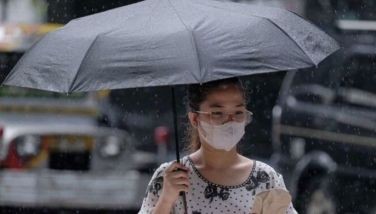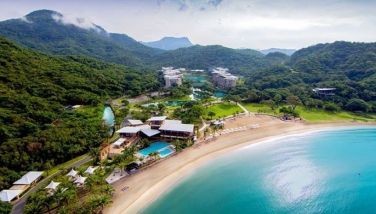Calabarzon, Metro classes suspended due to Taal vog

MANILA, Philippines — Schools in over 40 areas in Calabarzon and Metro Manila suspended on-site classes yesterday due to volcanic smog or vog that covered many areas in Batangas and Cavite as Taal Volcano emitted at least 3,335 tons of sulfur dioxide.
According to the Department of Education, classes were suspended in schools located in Balete, Balayan, Malvar, Laurel, San Jose, Mataasnakahoy, Agoncillo, San Nicolas, Nasugbu, Lemery, Lian, Talisay, San Luis, Alitagtag, Calaca City, San Pascual, Calatagan, Tuy, Cuenca, Sta. Teresita, Bauan, San Juan, Taal, Padre Garcia and Ibaan – all in Batangas province.
In Cavite, face-to-face classes were also suspended in Silang, Mendez, Indang, Alfonso, GMA, Carmona, Gen. Emilio Aguinaldo, Amadeo, Maragondon, Naic and Carmona.
Schools in Calamba, Biñan and Los Baños in Laguna province as well as Metro Manila schools in Las Piñas and Muntinlupa also suspended classes.
Education Secretary Sonny Angara issued a memorandum authorizing all affected schools in Calabarzon and Metro Manila to suspend classes if there are no announcements from local government units. He also ordered schools to implement modular or online learning.
“Meanwhile, the decision to lift the suspension will depend on whether it is safe for learners and teachers to return. Concerned personnel are advised to stay updated through news and announcements from the Philippine Institute for Volcanology and Seismology,” Angara said, referring to Phivolcs.
He urged schools to report any displacements, injuries or other incidents involving students and teachers connected to the volcanic smog.
Teresito Bacolcol, Philippine Institute of Volcanology and Seismology (Phivolcs) director, said over dzBB that the smog was experienced in the towns of Laurel, Tuy, San Luis, Balayan, Lemery, Talisay, Agoncillo, San Nicolas, Balete, Santa Teresita, Malvar and Alitagtag as well as in the cities of Calaca, Batangas and Santo Tomas – all in Batangas province.
The volcanic smog, he added, was also reported in Silang town and Tagaytay city in Cavite.
“Volcanic smog is a mixture of water vapor, water particulate and sulfur dioxide. If hot volcanic material comes in contact with water, steaming or degassing occurs. This is the emission of white smoke that we see at Taal Volcano,” Bacolcol explained.
Based on the latest bulletin from Phivolcs, there was an upwelling of hot volcanic fluids in the main crater lake of Taal, causing the vog. The bulletin also said the steaming reached 2,400 meters high, drifting in the north-northwest direction.
“Lately the steaming activity of Taal Volcano is high. We observed voluminous sulfur dioxide emission. Together with the emission of white smoke is the voluminous sulfur dioxide,” Bacolcol said.
He added that the slow movement of wind at Taal caused the steaming to stay in one place and form the vog and the “surrounding areas become hazy, especially in crowded communities.”
The volcanic smog is expected to dissipate once rains and strong winds occur.
“We are hoping it will rain so that it will dissipate fast,” Bacolcol said.
He recalled that the degassing activity of Taal Volcano started in 2020 “right after it erupted.”
“This is a natural occurrence since the steaming is strong and, in some cases, causing vog. So, basically it will take years before the emission of sulfur dioxide stops,” Bacolcol explained as he noted Alert Level 1 remains in effect at Taal Volcano.
“We have been implementing Alert Level 1 since July 2022. We don’t see any reason to increase (the alert level) because aside from the voluminous sulfur dioxide emission, other parameters are almost normal,” he said.
Citing data, Bacolcol said no volcanic earthquake was recorded at Taal for the past 11 days, although at least 31 phreatic eruptions were recorded since April.
He advised affected residents to wear N95 masks to protect themselves and to drink a lot of water once they inhale sulfur dioxide.
“If we cannot prevent going in the affected areas, they should protect themselves and wear masks, preferably N95,” he said.
Quezon City residents
Residents in Quezon City, especially those with respiratory ailments, have been advised to stay home as some areas were monitored to have “unhealthy” or “very unhealthy” air quality, the city government said.
The city’s air quality monitoring showed at least two areas – Cubao Arayat and Commonwealth Ave. near St. Peter Church – to have “very unhealthy” air quality between Aug. 18 and 19.
Nine other areas have “unhealthy” air quality – Susano Road, Payatas Controlled Disposal Facility, Commonwealth Ave. (near Pearl Drive), Jose Rizal High School, Batasan Hills Barangay Hall, Tandang Sora Barangay Hall, Tomas Morato Ave., EDSA-Timog Ave. and Libis Barangay Hall.
The city government previously installed air quality monitors across the city to regularly monitor air quality. It issues regular advisories and recommendations based on the monitoring.
“QCitizens, especially those with respiratory illnesses like asthma, please avoid going out of your homes. If this is not possible and you need to go out, please wear a mask,” the city government said in Filipino. — Janvic Mateo
- Latest
- Trending




























